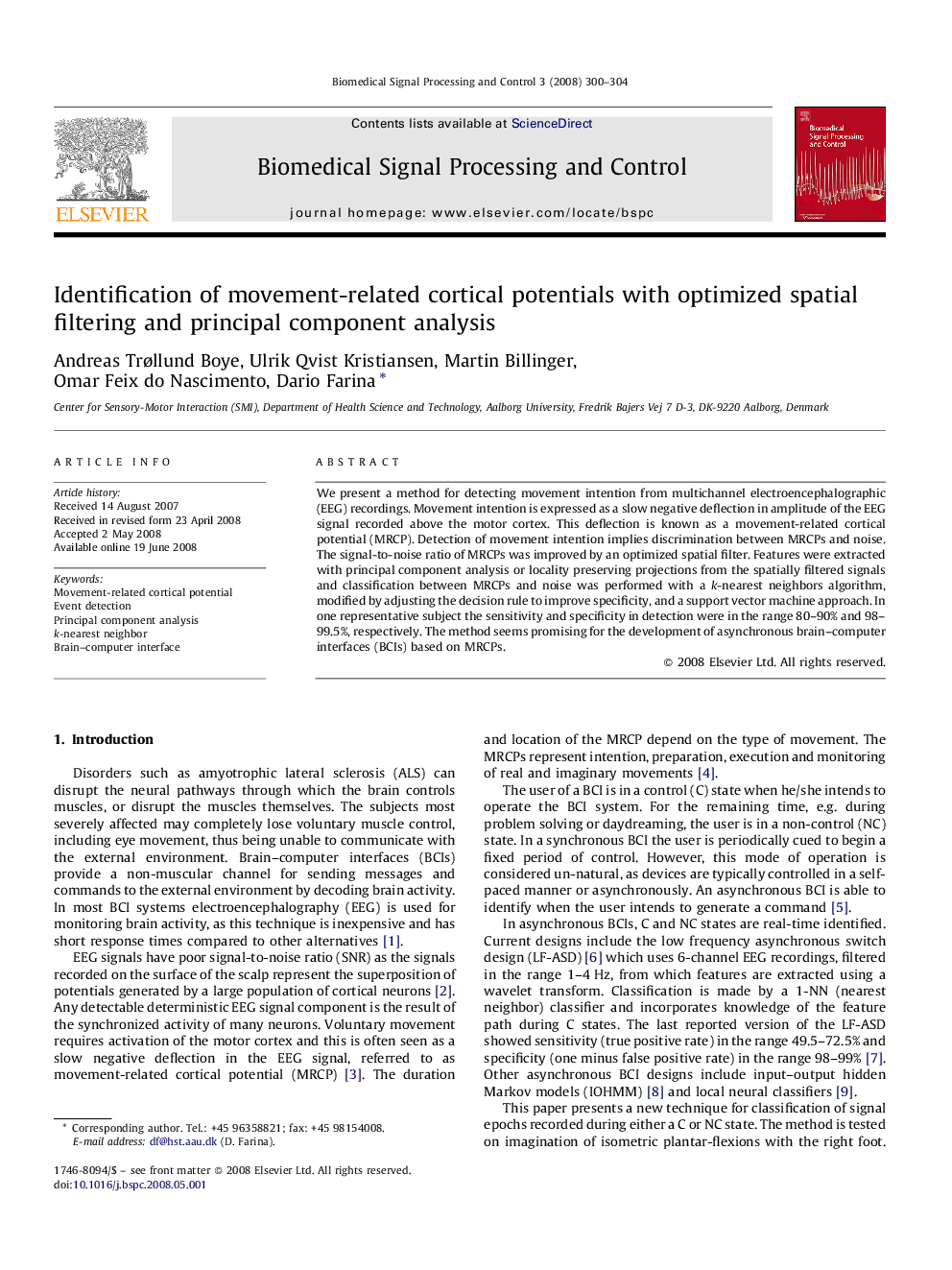| Article ID | Journal | Published Year | Pages | File Type |
|---|---|---|---|---|
| 558944 | Biomedical Signal Processing and Control | 2008 | 5 Pages |
We present a method for detecting movement intention from multichannel electroencephalographic (EEG) recordings. Movement intention is expressed as a slow negative deflection in amplitude of the EEG signal recorded above the motor cortex. This deflection is known as a movement-related cortical potential (MRCP). Detection of movement intention implies discrimination between MRCPs and noise. The signal-to-noise ratio of MRCPs was improved by an optimized spatial filter. Features were extracted with principal component analysis or locality preserving projections from the spatially filtered signals and classification between MRCPs and noise was performed with a k-nearest neighbors algorithm, modified by adjusting the decision rule to improve specificity, and a support vector machine approach. In one representative subject the sensitivity and specificity in detection were in the range 80–90% and 98–99.5%, respectively. The method seems promising for the development of asynchronous brain–computer interfaces (BCIs) based on MRCPs.
